10 cars with anniversaries in 2019 – that aren’t the Mini
If you’ve been mystified this year why Goodwood – plus almost every significant motoring event across the planet – has featured the classic, original and highly influential Mini in all of its many incarnations (BMC, Austin, Morris, Rover et al), just in case you’ve been napping, the minimalist Alec Issigonis masterpiece of packaging has turned 60 this year.
One of the greatest and most important motor cars of all time, the Mini is arguably the stand out car launched in 1959. Although the Mini has been the main focus of attention for its 60th birthday this year, however, the innovative Issigonis city car isn’t alone, as it is one of a number of other memorable 1959 motoring debutants now all old enough to apply for a bus pass!
Here are just ten examples of the other cars introduced 60 years ago that have been rather overlooked this year as the Mini has (understandably) hogged the limelight.

Ford Anglia
The curious-looking Ford Anglia 105E, with its ugly pike-like droopy mouth and unusual Z-back reverse-rake rear window (aimed at improving rear passenger headroom and keeping the screen clear) was Dagenham’s direct rival to BMC’s far more innovative Mini.
Favoured by less adventurous buyers of small family saloons, with its conventional rear-wheel-drive layout (but unconventional appearance), the Anglia was an instant sales success. It was introduced at the same 1959 Earls Court Motor Show as the Mini, and priced very competitively against the smaller (on the outside) Austin/Morris ‘wonder’ car.
The Anglia enjoyed some competition success (though rarely at the same level as the Mini) and turned a useful profit margin for Ford (unlike the Mini, which Ford’s engineers discovered was being built and sold at a loss when they stripped one down to see what made it tick!).
Ford Great Britain stuck with the Anglia’s odd Z-back formula for its larger, hideous and unpopular Consul Classic of 1961 (thankfully most of which have now rotted away due to the model’s designed-in rust traps) and then eventually replaced the 105E with Ford’s first true pan-European model: the 1968 Escort, jointly developed by Ford’s British and German divisions.
When the long-line of four generations of Escort were finally replaced by the original Ford Focus of 1998 (with the Issigonis Mini still in production!), the now-famous flying Anglia of Arthur Weasley (Ron’s dad) was revealed in the same year in J.K. Rowling’s second Harry Potter novel, The Chamber of Secrets.

Ferrari 250 GT Berlinetta SWB
The Ferrari 250 GT Berlinetta SWB (to the give the iconic Pininfarina-designed short wheelbase – SWB – it full name) was another 1959 arrival. The latest alloy and steel-bodied 250 derivative of Maranello’s 3.0-litre V12-powered masterpiece was first seen in 1952 in prototype S Berlinetta competition form for that year’s Mille Miglia, driven by Giovanni Bracco and Alfonso Rolfo.
Mounted to a shorter 2,400mm ‘corto’ wheelbase for shaper handling (‘regular 250 GTs using a longer 2,600mm wheelbase), the 250 SWB was offered in competition specification, or the more comfortable ‘Lusso’ road-going derivative, with a total of 176 examples built to create one of the greatest and most sought Ferraris of all time.
The 250 SWB was the first Ferrari GT to be equipped with standard disc brakes, the model enjoying great competition success (particularly in the hands on Stirling Moss at Goodwood in his famous royal blue Number 7 car, as can still be seen racing the at the Revival), winning the 1961 Constructor’s Championship in the prestigious GT class.
Chevrolet Corvair
Brave and revolutionary by contemporary North American standards, the Chevrolet Corvair (released in late 1959 for the 1960 Model Year) was General Motors’ response to the then influx of smaller, affordable imported cars, such as the Volkswagen Beetle and Renault Dauphine, both of which sold in large numbers in the USA at the time. Like these European imports, the Corvair adopted a rear-engined layout with clean and distinctive ‘high-waisted’ styling that strongly influenced later rear-engined Euro boxes such as the Hillman Imp, NSU Prinz, Simca 1,000, and so on.
GM’s fellow domestic competitors also reacted to the glut of cheaper imports with a whole new segment of compact 1959-released American models like the Ford Falcon, Plymouth Valiant, Studebaker Lark and pioneering Rambler American, all of which stuck rigidly to the tried and trusted front engine/rear-drive format, making the daring Corvair something of an exception.
The Chevrolet’s unconventional layout was ambitious, but ultimately lead to the Corvair’s premature demise due to supposed handling concerns caused by owners not regularly checking tyre (tire) pressures. This contributed towards the consumer rights and safety campaigner Ralph Nader’s best-selling book Unsafe at Any Speed, which slated the Volkswagen Beetle, but really went for the jugular of the Corvair, killing off many potential sales of the model. GM addressed most of Nader’s alleged issues with the tidier second-generation Corvair, not a bad car at all in its own right, but denied the chance to ever fully recover from the early safety fears. Chevrolet laid the model to rest sooner than originally planned in 1969. [Note how the car spins out of control during the above ad at 1:49, just after the voice over says “just watch how the Corvair stays under control in this situation…”]

Triumph Herald
Launched at the same time at the 1959 London Motor Show as future small saloon rivals the Mini and Ford Anglia, the Herald was Triumph’s answer to the growing demand for smaller family cars and possible second cars as Britain became increasingly prosperous post-war.
Styled by Italian design master Giovanni Michelotti (like most later Triumphs) the Herald was a simple and modern light car; unusually maneuverable with a taxi-like tight turning circle. It had a large forward-hinged bonnet that gave unparralled engine access, and was mounted on a separate platform that went on to spawn the popular Spitfire sports car, plus the six-cylinder Vitesse and GT6 coupe models. Loved by driving schools and busy house wives, the Triumph was deemed a tad more up-market than the Anglia and (ultimately classless) Mini. The model survived until 1971 and gained a place into the affections of many of us Brits, in a similar fashion to the older Morris Minor.

Lotus Elite
Although the jury is still out on which British car was the world’s first fibre-glass monocoque automobile – the Rochdale Olympic or Lotus Elite, the sporting GRP pair being launched within weeks of each other – the Elite was the more sophisticated and expensive GT with superb handling, appealing aerodynamic styling and an eager 1.2-litre OHV Coventry Climax motor, originally designed for a static fire pump.
The fragile Elite benefitted from the engineering genius of Lotus founder Colin Chapman, who first presented the model in prototype form in 1957, with limited production getting underway in 1959. Bristol Cars ultimately made the GRP monocoque shell.
Despite its tiny engine, the Elite’s unique combination of lightness, low-drag shape and nimble handling could embarrass many larger, more powerful sports cars. It’s fragility, high price and loud, drummy low-rent interior were serious flaws though, unfairly tarnishing the image of this amazing driver’s machine.

Jaguar Mk 2
Introduced the same year as Britain’s first motorway, the 1959 Jaguar Mk 2 was the ideal car for rapid mile-munching, pre-speed limited dual lane driving. A much-improved evolution of Jaguar’s poor-handling earlier 2.4 ‘Mk 1’, the Mk 2 was a sports saloon with a wider rear track to aid handling, and the plush interior ambiance of a gentleman’s club, allied to lively performance and good handling. It was the preferred choice of cops and robbers alike, as well successful and respectable business men.
A staple of Jaguar’s Browns Lane production line throughout most of the 1960s, the Mk 2 lived on until the end of the decade, briefly overlapping with the refined XJ6 that ultimately replaced the now legendary Mk 2.

Citroën Bijou
Designed by Peter Kirwan-Taylor, the same man who also styled the aforementioned slippery Lotus Elite, the Citroën Bijou was a UK-only two-door city coupe, created by the French manufacturer’s Slough-based factory to use-up spare 2CV chassis’ that us conservative Brits didn’t take to first time around in the 1950s.
The Bijou’s attractive design reflected that of its larger DS sibling, the revolutionary saloon launched to great shock and acclaim in 1955, and also assembled in Slough. With a heavy fibreglass body mounted on the 2CVs chassis and small motor, the Bijou was even slower than the snail-paced base car, with rear seat access and space poor.
Any sales chance the little British Citroën may have had was instantly crushed by BMC’s launch of the Mini at the same Earls Court Motor Show in 1959, with the Bijou being costlier, slower, thirstier and less space efficient. Ultimately only 204 examples of the GRP Citroën were made before production ended in 1964, the Bijou today being a much sought and prized collector’s item, especially overseas.

Sunbeam Alpine
Aimed at its fellow English sporting rivals from MG, Triumph et al, the 1959 Sunbeam Alpine was the Rootes Group’s answer to the strong and lucrative American export demand for classic British soft-top roadsters.
Reviving the revered Alpine name used by Rootes from its earlier (1953-55) rakish two-seater drophead, the ‘new’ Alpine was styled by the infamous Raymond Loewy’s team in the USA, and based on the underwhelming chassis and mechanicals of the Group’s humble Hillman Minx family saloon. With a 1.5-litre engine, initially the Sunbeam’s performance was quite leisurely for a sports car, unable to quite achieve 100mph.
The later V8-powered Tiger (which shoehorned a vase Ford Mustang V8 under the Alpine’s coachwork) more than addressed the Sunbeam’s lack of performance, but the Alpine itself still enjoyed a modicum of success, though not enough to ever bother MG or Triumph. The model soldiered on (with smaller tail fins) until 1968 with just under 70,000 examples built.
BMW 700
BMW’s answer to late 1950s economy family motoring, the 700 was instantly out-moded by BMC’s Mini that was launched within days of the small rear-engined BMW.
Despite this, in its German home market the small BMW sold well, with over 188,000 examples made over six years, bringing in much-needed cash to the Bavarian vehicle maker that was dangerously close to financial ruin at the time, and potentially about to merge with arch rival Daimler-Benz!
Styled by Michelotti (like the Triumph Herald of the same era) the BMW 700 was a vast advance over the frightful Isetta and 600 BMW ‘bubble car’ models that it replaced, helped by a sprightly 697cc engine that proved its worth in motor racing in the early 1960s. The BMW 700 is a pretty if somewhat forgotten car today.

Daimler SP250 ‘Dart’
Officially named the Daimler SP250, but often nick-named the Dart, the V8-powered sports car was a car out of character for the staid and formal Coventry-based luxury car maker.
The SP250 mated a capable new 2.4-litre, 140bhp V8 engine with a low, slippery (but unfortunate looking) fibre-glass 2+2 convertible body. The Dart was the last Daimler to be launched before previous competitor Jaguar Cars acquired the marque. This move quickly sealed the fate of the SP250 as the model was to (briefly) compete directly with Jaguar’s own drop-dead gorgeous E-type, launched just two years after the sporting Daimler’s debut.
Jaguar killed the SP250 off in 1964, but retained the Dart’s fine V8 engine to slot into other models, including the ‘badge engineered’ Daimler V8, using the established Mk II’s sports saloon bodyshell.
Citroën image courtesy of Image by Charles01.
Axon's Automotive Anorak
Jaguar
Mk2
Daimler
SP250
BMW
700
Sunbeam
Alpine
Citroen
Bijou
Lotus
Elite
Triumph
Herald
Chevrolet
Corvair
Ferrari
250 SWB
Ford
Anglia
Mini






































































